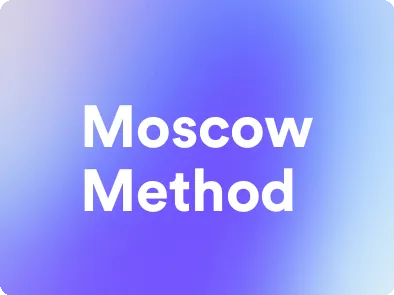Moscow Method: A Productivity Approach Revolution
This guide will walk you through the essential elements of using moscow method - the productivity method to keep your team productive and engaged.
Try Lark for Free
Preface: The Moscow Method is a powerful approach that aims to boost productivity and efficiency in both personal and professional domains. Originating from agile project management, it has garnered significant attention due to its structured prioritization technique. In this comprehensive guide, we will delve into the intricacies of the Moscow Method, its application, benefits, and potential drawbacks. Whether you're an individual seeking to streamline your task management or part of a team aiming for enhanced project planning, this article will provide valuable insights into leveraging the Moscow Method effectively.
Understanding the Moscow Method
What is Moscow Method in the context of productivity? The Moscow Method is a prioritization technique used to categorize and organize tasks based on their significance and impact. The acronym MoSCoW stands for 'Must have,' 'Should have,' 'Could have,' and 'Won't have.' This approach aids in classifying user requirements and features during project management, enabling stakeholders to make informed decisions regarding resource allocation and timelines.
What is the origin of Moscow Method? The Moscow Method finds its origins in the field of agile project management, where it was initially introduced as a means to prioritize project requirements. Coined by industry experts, the method gained prominence for its simple yet effective approach to delineating pivotal tasks from those that are less critical.
Who Benefits from the Moscow Method?
Who is the Moscow Method for? The Moscow Method is tailored to benefit a diverse spectrum of individuals and organizations, including project managers, team leaders, entrepreneurs, and anyone seeking an organized approach to task management. Its adaptability makes it suitable for both small-scale personal projects and large-scale corporate endeavors.
Use Lark to unleash your team productivity.
Analyzing the Pros and Cons
What are the pros and cons of the Moscow Method? Pros:
- Streamlined Prioritization: The method simplifies the process of prioritizing tasks, enhancing efficiency and focus.
- Enhanced Decision Making: Clear categorization aids in making informed decisions regarding resource allocation and project timelines.
- Improved Transparency: Stakeholders gain better visibility into critical project aspects, fostering effective collaboration.
Cons:
- Rigidity in Implementation: The strict prioritization may lead to overlooking subtle yet valuable tasks.
- Potential Overemphasis: Overemphasis on 'Must-have' tasks may undervalue essential but non-urgent requirements.
- Complexity in Application: Implementation may require initial learning and adaptation, posing challenges for novice users.
Getting Started with the Moscow Method
How to get started with Moscow Method?
- Understanding the "MoSCoW" Principle: Familiarize yourself with the core concept of categorizing tasks into Must-have, Should-have, Could-have, and Won't-have.
- Identifying Project Requirements: Begin with identifying the diverse requirements and tasks associated with your project, ensuring clarity and specificity.
- Categorizing Tasks: Segment the identified tasks into the respective priority categories, leveraging the framework provided by the Moscow Method.
- Review and Validation: Collaborate with stakeholders to review and validate the classified tasks, ensuring alignment with project goals and objectives.
Learn more about Lark x Productivity
Use Lark to unleash your team productivity.
Actionable Tips for Optimizing the Moscow Method
Do's and Don'ts
| Do's | Don'ts |
|---|---|
| Clearly communicate task priorities to all stakeholders. | Avoid applying rigid categorization without flexibility. |
| Regularly reassess task classifications based on evolving project dynamics. | Don't disregard the value of 'Could-have' tasks; allocate insights and resources accordingly. |
| Foster a collaborative environment to ensure consensus on task prioritization. | Avoid overcomplicating the classification process; uphold simplicity and clarity. |
Conclusion
In conclusion, the Moscow Method presents a robust framework for task prioritization and resource allocation, offering a clear pathway towards enhanced productivity and project success. By recognizing the significance of tasks within the 'Must-have,' 'Should-have,' 'Could-have,' and 'Won't-have' categories, individuals and teams can optimize their efforts, streamline decision-making, and achieve impactful outcomes.
